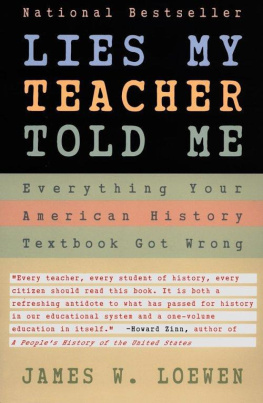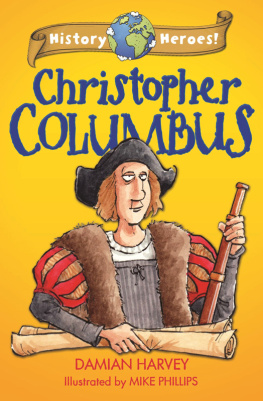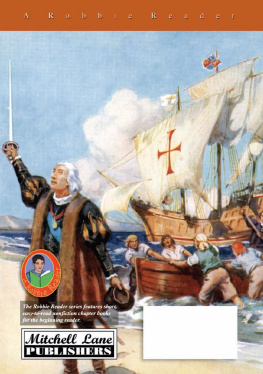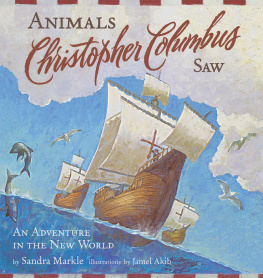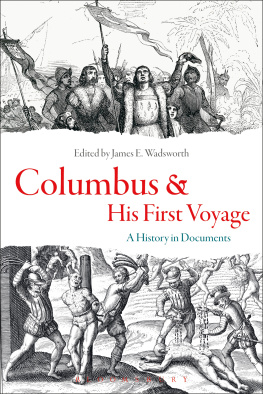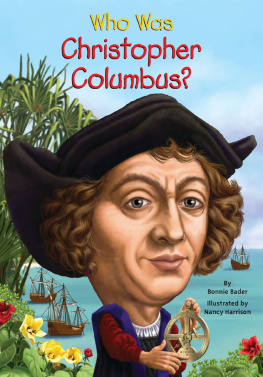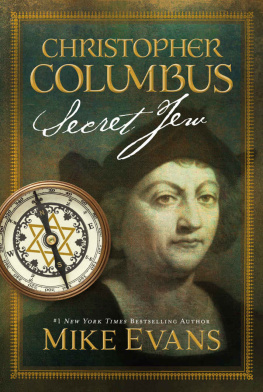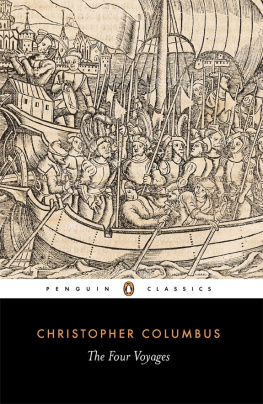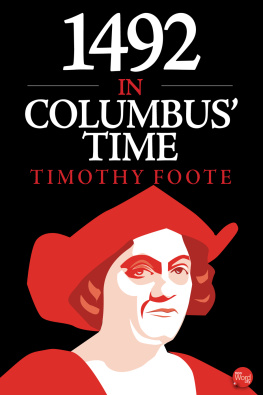Thank you for buying this ebook, published by NYU Press.
Sign up for our e-newsletters to receive information about forthcoming books, special discounts, and more!
Sign Up!
About NYU Press
A publisher of original scholarship since its founding in 1916, New York University Press Produces more than 100 new books each year, with a backlist of 3,000 titles in print. Working across the humanities and social sciences, NYU Press has award-winning lists in sociology, law, cultural and American studies, religion, American history, anthropology, politics, criminology, media and communication, literary studies, and psychology.
COLUMBUS:
HIS ENTERPRISE
BY THE SAME AUTHOR
(until 1972, writing under the name Hans Koningsberger)
FICTION
The Affair
An American Romance
A Walk with Love and Death
I Know What Im Doing
The Revolutionary
Death of a Schoolboy
The Petersburg-Cannes Express
The Kleber Flight
DeWitts War
America Made Me
Acts of Faith
The Iron Age (forthcoming)
NONFICTION
Love and Hate in China
Along the Roads of Russia
The Future of Che Guevara
The Almost World
A New Yorker in Egypt
Nineteen Sixty-Eight, a Personal Report
COLUMBUS:
HIS ENTERPRISE
Exploding the Myth
by Hans Koning
Including
Columbus in the Classroom
by Bill Bigelow

Copyright 1976, 1991 by Hans Koning
Columbus in the Classroom copyright 1991 by Bill Bigelow
All rights reserved
Engravings on pages from Bartolom de las Casas, Den Spieghel vande Spaensche tyrannic (Amsterdam, 1609). These are reprinted by permission of the Rare Book Division, The New York Public Library, Astor, Lenox, and Tilden Foundations.
Library of Congress Cataloging-in-Publication Data
Koning, Hans, 1921
Columbus : his enterprise / by Hans Koning ; afterword, Columbus in the classroom, by Bill Bigelow.
p. cm.
Includes bibliographical references.
ISBN 9780853458258
1. Columbus, Christopher. 2. AmericaDiscovery and explorationSpanish. 3. ExplorersSpainBiography. 4. ExplorersAmericaBiography. I. Title.
E111.K65 1991
970.015dc20
[B]
90-26579
CIP
Monthly Review Press
146 West 29th, Suite 6W
New York, NY 10001
Manufactured in Canada
10 9
CONTENTS
Columbus in the Classroom
by Bill Bigelow
A 1991 INTRODUCTION
Columbus: His Enterprise was written and published fifteen years ago. Miraculously, it has stayed in print ever since (with slowly increasing sales). I write miraculously because books in the United States that see the light of day without ads or other flourishes rarely live more than a few months. Miraculously also because during all those years I have not often found sympathy or even comprehension for its point of view, its discovery that Columbus was neither a wise but misunderstood explorer nor even a brave adventurer, but (quoting my own book) a man greedy in large and in small ways, cruel in petty things and on a continental scale. More often than not, I saw people being surprised at the suggestion that the traditional image of Columbus, as taught in our schools, was a political one, based on our smug and biased reading of the past.
But in the most recent years there has been a change in the air. A new generation of childrenblack, white, red, yellowin our schools has been asking for a more objective, less Eurocentric, white race-oriented, teaching of history (and this book was primarily written for our high schools). I realize that the children may not have put it that way: there was simply a gut feeling that there was something terribly and terrifyingly wrong with the traditional stuff about the pious white man and the primitive savage.
Those feelings went hand in hand with our new awareness of the environment. We are discovering that the peoples whom we contemptously called primitive were vastly superior householders and managers of our earth than we are, and that it may be a do-or-die matter for us to learn from them in time.
As I write this, we are approaching the five hundred year mark, the quincentennial, of the fateful year, 1492, when the first Europeans, or anyway the first recorded, modern, Europeans made a landfall in the Americas. That mark, 1992, will be an occasion of much hoopla and ballyhoo. Our politicians will hold forth about civilization, the pioneer spirit, Americanism triumphant, and Columbus the Noble Son of Italy as our first immigrant. They assume that this will please their constituents, or anyway the majority of them, and politicians think of course in terms of majorities. But I hope they are underestimating us. Possibly the occasion will become one where we finally get to grips with the false heroes and the false heroisms which for so long have burdened our history and our national character. Quite spontaneously, from Portland to New York City, there has already sprung up a wide variety of groups wanting to commemorate rather than celebrate 1492, wanting to use this occasion to ponder on five hundred years of American history. They feel it must be made a time for introspection, and for an effort at final conciliation of the races of America.
South of the border, the myth of Columbus obviously has a different color. In Mexico, the 12th of October is called the day of the Raza, the one race as it now exists there of Spanish, Indian, and African blood. Mexico Citys central avenue, the Paseo de la Reforma, has statues of Aztec chiefs and Mexican heroes all along its length, with near one end a single statue of Columbus (the only one in town), which is the site of frequent anticolonial, antiracist, anti-Spanish demonstrations. The year 1992 will be commemorated in Mexico by seminars and the publication of a new history of the country, not by celebrations. In Uruguay, the Indians will commemorate October 11, 1492, as their last day of freedom. But there are also countries such as Argentina and Peru where a small almost-pure-European elite holds most power, and here the festivities and their commercial fallout of plastic Santa Marias and such will presumably go full tilt. Theyll be sponsored by Spain, which sees in the occasion a chance to promote its commercial influence in Latin America, andsomewhat surprisinglyby Japan, which has the same purpose in mind. Therell be parades and landings of facsimiles of Columbus ships, and whatever else the ad men will think up.
You may object that there is nothing wrong with some fun flag waving and paradingbut there is. When you read the story of Columbus that follows, keep in mind that you arent reading anyones opinion. You are reading facts of history. The year 1492 opened an era of genocide, cruelty, and slavery on a larger scale than had ever been seen before. We must finally learn to look at that past with open eyes. We must dare abandon our comfortable but false myths, for the sake of our children and their children. If we do not learn from history, we are doomed to repeat it. We must hope and try for a new harmony, for an atonement of past crimes, and discover in that way a truly new world.
1
THE ENTERPRISE OF COLUMBUS
Next page

